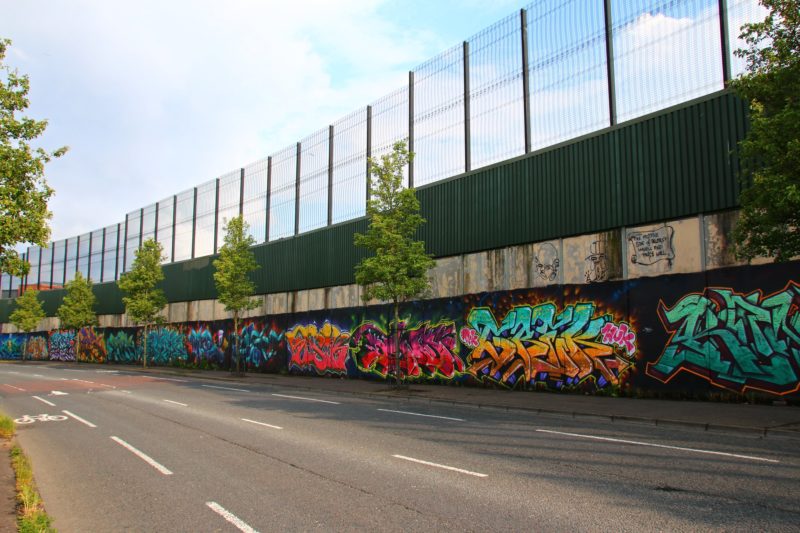Growing minority of teachers in Northern Ireland working across sectarian divide

Images de Belfast Images des murs de la paix (peace walls ou peace lines) qui séparent les communautés religieuses à Belfast. On en compte près de 100, de 4 à 7.5m de hauteur, de quelques centaines de mètres à 5 km de long. Les routes comportent des portes blindées.
A study by researchers at the University of Ulster has found that more teachers in Northern Ireland than ever before are working across the sectarian divide, with teachers from Catholic communities working in Protestant schools and vice versa. This is especially the case for those working in post-primary schools (age 11+).
The study, published in the British Journal of Educational Studies, also found that one-in-five teachers working in Northern Ireland schools have no education experience outside their community of origin: throughout their entire education and teaching career, these teachers have remained within schools that primarily cater to the same community.
The authors of the paper, ‘Education policies and teacher deployment in Northern Ireland: ethnic separation, cultural encapsulation and community cross-over’, argue that further research is required to investigate whether this ‘cultural encapsulation’ is hampering efforts to foster reconciliation between the two communities.
Historically, schools in Northern Ireland have been split across sectarian lines, with maintained schools and Catholic grammar schools primarily catering to the Catholic community and controlled schools and non-denominational grammar schools primarily catering to the Protestant community. Not only are over 90% of the children at these schools from just one of the communities, but many of the teachers also come from the same community. Northern Ireland even has an exemption from fair employment legislation for teacher recruitment, allowing schools to preferentially employ teachers from just one of the communities.
The situation appears to have improved somewhat since the signing of the Good Friday Agreement in 1998 and the rise of integrated schools that teach children from both communities, although only 7% of children in Northern Ireland attend such schools. But Matthew Milliken and his colleagues at the University of Ulster, School of Education, wanted to determine whether this was leading more teachers in Northern Ireland to teach across the sectarian divide, especially as the last study on this question had been conducted back in 2004.
To find out, they couldn’t simply review school records, because schools in Northern Ireland don’t collect information on whether their teachers identify as Catholic or Protestant. So, the researchers designed an online survey and then contacted all the schools in Northern Ireland to request that their teachers complete this survey.
To achieve as high a response rate as possible, the survey didn’t ask respondents which community they identified with, but simply asked them what type of schools they went to during their education, whether controlled, maintained or integrated. The type of primary school they attended was then used as a proxy for community identity.
Just over 1,000 teachers completed the survey, reflecting around 5% of the teaching population in Northern Ireland. Their responses revealed that teachers in Catholic primary schools (age 5–11) were most likely to have stayed within their community, with 48% of teachers having only attended and taught at Catholic schools. The figures were similar for teachers in Protestant primary schools, with 38% having only attended and taught at Protestant schools. In post-primary schools, however, the figures were much lower: 19% of teachers at Catholic post-primary schools and 9% of teachers at Protestant post-primary schools.
So, while the study revealed that one-in-five teachers had no education experience outside their community of origin, it also found that around 17% of teachers were currently working in schools outside of their community of origin. While still small, this percentage is higher than had been found by previous studies.
“This research has shown that the ‘chill factor’ that was understood to have maintained the sectoral separation of teachers by religion/community background would appear to have thawed to some extent,” said Milliken, from the university’s UNESCO Centre.

 China
China